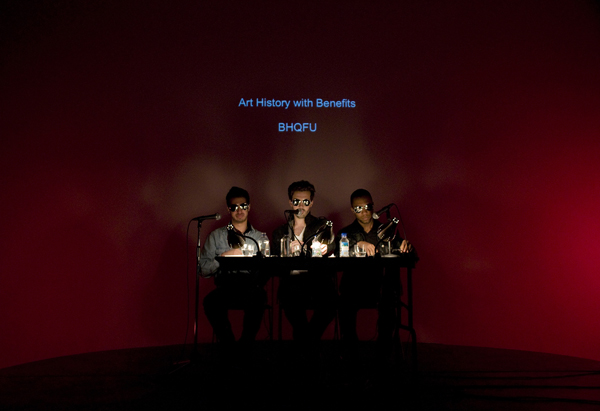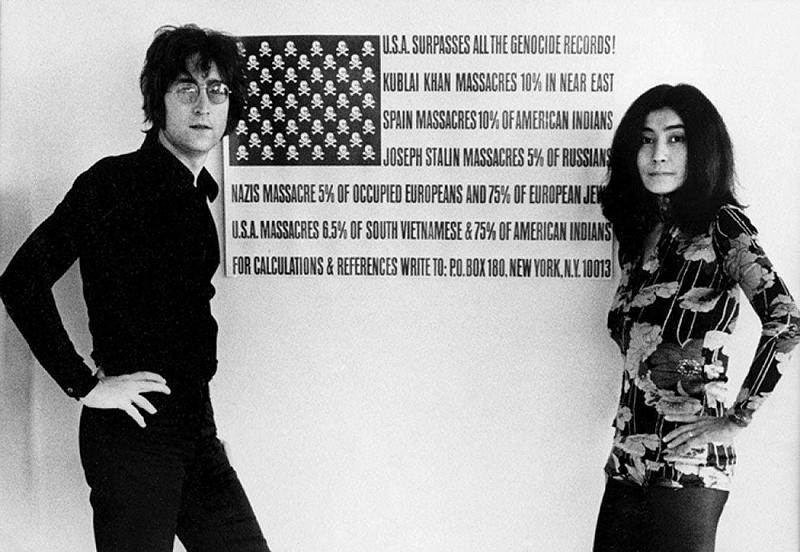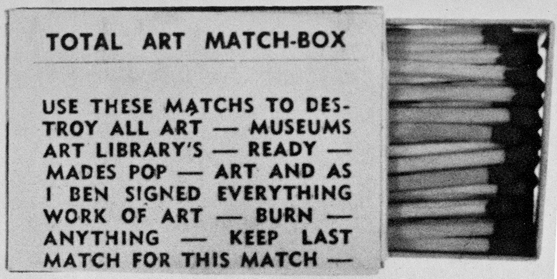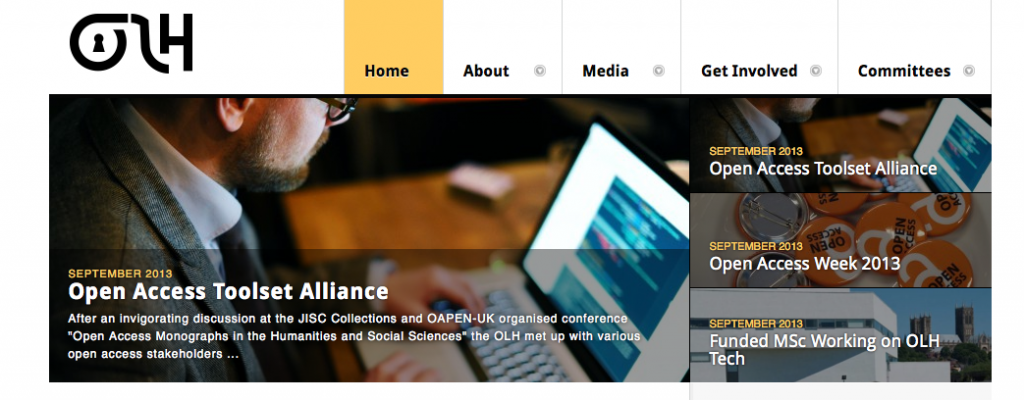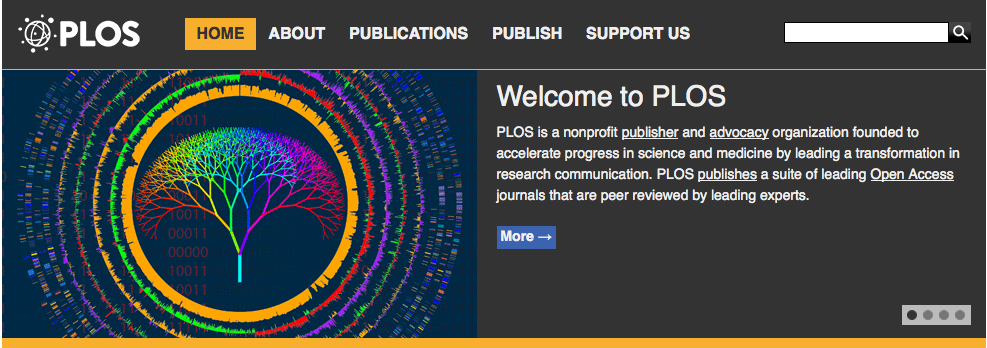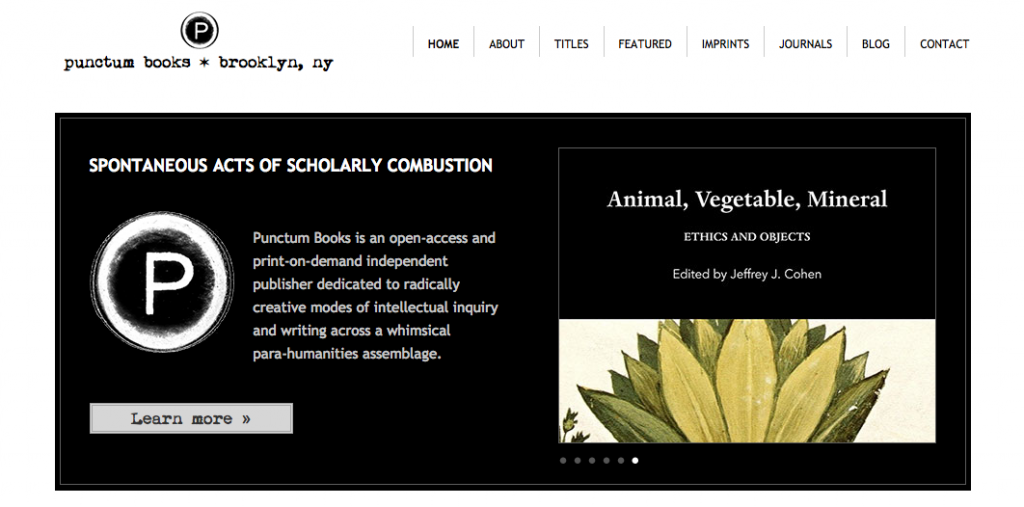by EILEEN JOY
I was very lucky to be invited recently by George Washington University — more specifically, GW’s new Digital Humanities Institute [Alex Huang], GW’s Medieval and Early Modern Studies Institute [Jeffrey Cohen], and the Gelman Library [Geneva Henry and Karim Boughida] — to give a talk on the state(s) and future(s) of open-access publishing, and in order to make this talk more accessible, I am sharing it here [in augmented form]!
A Time for Radical Hope: Freedom, Responsibility, Publishing, and Building New Publics
Professional Challenges. Amateur Solutions.
~The Bruce High Quality Foundation
For what may we hope? Kant put this question in the first-person singular along with two others — What can I know? What ought I to do? — that he thought essentially marked the human condition. With two centuries of philosophical reflection, it seems that these questions are best transposed to the first-person plural. And with that same hindsight, rather than attempt an a priori inquiry, I would like to consider hope as it might arise at one of the limits of human existence [such as the collapse of an entire culture]. . . . What makes hope [in the face of such a collapse] radical is that it is directed toward a future goodness that transcends the current ability to understand what it is. Radical hope anticipates a good for which those who have the hope as yet lack the appropriate concepts with which to understand it.
~Jonathan Lear, Radical Hope: Ethics in the Face of Cultural Devestation
The Bruce High Quality Foundation is an anonymous collective and unaccredited art school, formed in 2004 by graduates of Cooper Union art school in New York City, who wanted to “foster an alternative to everything,” especially in New York City’s rarefied art world. Bruce High Quality is their whimsically invented figure-head: a sculptor who supposedly perished, along with all of his works, in the 9/11 attacks, and whose memory and legacy the collective seeks to maintain. One of their first interventions, or acts of institutional critique, happened in 2005 when the Whitney Museum wanted to honor the legacy of the illustrator Robert Smithson by constructing an actual “floating island” based on one of his drawings, “Floating Island to Travel Around Manhattan Island.” The constructed island, complete with living trees, was pulled by a tugboat around New York Harbor. The Bruce High Quality Foundation responded to the event with their own performance, titled “The Gate: Not the Idea of the Thing but the Thing Itself,” in which members of the collective pursued the Smithson island in a small skiff carrying a model of one of the orange gates by Christo and Jeanne-Claude that had been displayed in Central Park earlier that year. In 2007, they donned football gear and “tackled” public sculptures. They also produced a film in 2008 in which zombies take over the Guggenheim, and the Bruce High Quality Foundation fights them with the actual art collections (for example, decapitating the zombies with Brancusi sculptures while the art critics hide and cower in the museum’s cafeteria). In 2010, and despite the Bruce High Quality Foundation’s efforts to remain anonymous and iconoclastic, they were included in the Whitney’s 2010 Biennale. We’ll call this the “coming full circle” narrative, from inside the institution (Cooper Union) to its radical Outside and then back in again (the Whitney).
I open with this brief anecdote about the Bruce High Quality Foundation to call attention to some of the really interesting movements, events, and projects (including new galleries, schools, journals, zines, presses — a whole host of what I will call alt-cult, or “alternate-cultural” organizations) that have been founded in the past 10 or so years by students but also by post-grads without secure footholds in the academy (or museum) proper who are just deciding, with some faculty and other collaborators, to make things happen: things like the Brooklyn Institute of Social Research, the Organism for Poetic Research (in New York City), continent. journal and Speculations journal and TAG (3 of the most exciting new multidisciplinary journals run by over 10+ grad. students and post-grad. adjuncts spread out around the globe), The Public School New York, the Department of Eagles in Tirana, Albania, the Confraternity of Neoflagellants (in Edinburgh, London and Montreal), the Art School within the Art School (in Syracuse, New York), the Dublin Unit for Speculative Thought (D.U.S.T.), Silent Barn (a performance-incubation space in Brooklyn), the Leeds Weirdo Club, the Vancouver Institute of Social Research, and one of my personal favorites, The Hollow Earth Society, a group of artist-scientists based in Brooklyn who believe in the application of scientific rigor to dreams. I have been interested in these groups and projects for a long time now, especially for the ways in which they mine, from historically-invested perspectives, the interstitial spaces of institutionality and also bring into being new para-institutional spaces. These are not groups who reject the museum, the gallery, the conventional publishing world, or the university — rather, they seek to inhabit the position of the ‘para-‘ [the ‘beside’], a position of intimate exteriority, or exterior intimacy.
Pedagogies of Disaster, joint project between the Department of Eagles (Tirana, Albania) and punctum books
I have personally been inspired by the energies and projects and products of these groups, while I also worry a lot over their long-term sustainability. It may be that the ephemeral nature of such movements and group formations is perfectly all right, and just par for the course — think of something like the anti-gallery and anti-museum and anti-stable art “products” Fluxus network in the 1960s and 1970s (which included figures such as John Lennon and Yoko Ono) and which produced many “happenings” and ephemeral art projects, and which no longer really exist, but they did found SoHo, after all, and institutions such as The New School for Social Research also arose out of such rebellious and radically innovative alt-cult social formations.
At the same time, I’m keenly interested in seeing how we might create new institutions for fostering such innovative work and helping it to thrive, especially because I believe we need such creative provocations right now regarding what we do “in here,” and also because I would like to provide some dose of radical hope for the youngest members of our humanistic professions and trades who are currently grasping for what is less and less hospitable space within our institutions (of higher education, of the fine arts, of the cultural industries, etc.), and because I also believe, with Jonathan Lear, that hope requires courage, and courage is a collective affair, and further, following Aristotle, that “courage aims at what is fine,” but also “paradigmatically involves the serious risk of serious loss and of enduring certain pains,” and yet nothing could be so necessary now within our current institutional situation. So, on one level, punctum books was founded to respond to the “siren call” of these groups, and to try to devise some sort of institutional and corporate shelter for them that would not, nevertheless, impinge in any way on these groups’ radical energies and creativity, which partly depend upon, frankly, being anti-institutional. But let’s pause to reflect as well that there is almost no act of anti-institutionality that does not also aim at a reform of the institution, and therefore also represents some sort of investment in, and even love for, that institution. Let us pause to reflect: institutional critique, and even occasional radical departures to the Outside, are forms of love for the institution. Take Diogenes, for example, our original Cynic. If he hated Athens so much and thought it was so corrupt, why did he set up shop in a large jar in the marketplace where he could be seen and heard haranguing the citizens of Athens all day long?
Regarding what goes on within the institution, punctum books was also founded to respond to what I hope we can agree is a sort of crisis in academic publication (with “publication” here understood not only as the primary vehicle for the dissemination of our thinking, but also as the production of actual publics, without which intellectual and cultural life cannot flourish nor be shared). We are currently witnessing a period of unprecedented technological innovation (that promises substantial benefits for the production of our work, its dissemination, its analysis, and its safekeeping as archive, or memory), while we are also experiencing the rapid and austere contraction of financial and other forms of support for producing the most rigorously evaluated, closely edited, and aesthetically appealing scholarship. You don’t have to search too far to find all sorts of examples of this contraction, even sometimes embedded in announcements for the most newly innovative publishing platforms.
So, for example, we might survey some recent experiments by university and commercial academic presses to cultivate and produce shorter-form e-books and “gray” literature (i.e., Princeton Shorts, Stanford Briefs, University of Minnesota Press’s Forerunners, and Palgrave Pivot),[1] that are intended to “pull in new readers for serious scholarship,” and at a time, moreover, when “academic libraries have ever-smaller amounts of money and space to lavish on [longer] books, which often have more pages than they have readers.”[2] Paul Harvey, the new director of Stanford University Press, explains that these books will be “accessible but not simplified, and should be digestible in one or two sessions — bite-sized — and not require a month of reading”[3] (as if that’s a bad thing). At the same time, we are witnessing the launching of new (and frankly, EXCITING) academic publishing initiatives, such as Anvil Academic, a platform for “born-digital” and “born-again-digital” “post-monograph” (non-book) research that is pinning its hopes for the future of academic publishing on networked and “digital-only” environments that would “free scholarly argument fromthe limitations of the printed monograph and allow authors to bring the full force of technology to the presentation of their work.”[4] So now, somehow, the monograph is a limitation, as opposed to a unique genre of scholarly writing that might still serve particular purposes alongside other sorts of new genres that might be activated through newer technologies (for a really important recent conference at the British Library on the possible futures of open-access monographs, go HERE). (I must pause to note here, however, that Anvil Academic, along with Open Humanities Press, is actually my favorite digital publishing initiative, because rather than building one particular type of digital platform and asking authors to shape their work within that platform — whatever it might be — they have taken the riskier move of offering infrastructure and other types of support services that would be uniquely designed to meet the desires and needs of whatever creative and complex types of born-digital scholarship might be conceptualized by individual scholars, and I consider that incredibly progressive and exciting.
At the same time, under pressure from the UK government and the recommendations of the Working Group on “expanding access to published research findings” (otherwise known as the Finch Report), which is insisting that all faculty at UK research universities publish only in open-access platforms (and actually won’t receive credit for their work in the national research exercise unless they do), we’re seeing the rise of initiatives such as Open Library of Humanities (where, full disclosure, I serve on the Editorial Committee), which has decided that the so-called “bound codex,” and even the PDF, is dead, or almost-dead, and which is placing all of its bets on a PLOS-style megajournal where we all would simply upload our research to a sort of open-access cloud-like entity, but with “filters” (i.e., some sort of specialist gatekeeping), and then afterwards, we can all “aggregate” this material however we like into “overlay journals” or Mendeley-style shareable databases. This is actually a kind of groovy, almost Napster/Pandora/Spotify way to publish and share scholarship but having sat in on the meetings, I can tell you that all the money talk seems to be focused on platform and coding costs, with the assumption that so-called “editing” isn’t really necessary (as long as certain experts determine what gets in and what doesn’t get in), or if it is necessary, it will remain as the service work it always has been (a system that is seriously broken in certain respects), and what falls away here is the idea that certain groups of scholars and their students — call them associations, societies, groups, fields, specialties, whathaveyou — might need specific sorts of platforms, infrastructures, modes and genres of delivery, and specific products around which certain types of communities would not only gather, but flourish and thrive, as well as produce distinctive styles of scholarship. Herein lies the critical link between publishing and public-ation, or the making of distinctive publics which must needs be diverse, each with their own voice, values, modes and styles of enunciation, and so on. CONFESSION: I am concerned with style, especially as it is not just an adornment laid on top of content: it is, in fact, what generates content. Another way of putting this is: form matters. “One megajournal to rule them all” is a phrase that sometimes disturbs my sleep at night. (Please also go HERE and HERE to see how new OA initiatives are shaping up within the University of California system and also at Harvard.)
Now, Open Library of Humanities, admirably, is faculty and library-driven (indeed, OLH favors library-partnership-subsidized article processing charges over the author-pay model that PLOS uses), so how, then, are commercial publishers in the UK responding to the open-access mandate? Palgrave recently announced Palgrave Open, which allows individual authors and institutions to pay to have their work published in open-access form: $2,000 for individual articles, $12,000 for shorter-form Pivot books, and $17,500 for monographs. That’s Gold Open-Access. (Please insert a pregnant pause here.) Or, you can go with Green Open-Access, which is a bit of a misnomer, because it means that Palgrave can keep your material locked behind various paywalls for a certain length of time (they call that an “embargo”), after which authors are allowed to place, or “self-archive” their work in a repository at their university where it can be shared with that university’s users, but the self-archived version must be “the original pre-peer-reviewed version or the post-peer-reviewed pre-copyedited version of the manuscript.” (Please insert another pregnant pause here). If that seems too steep to you (Gold OA), or too weird (Green OA), don’t worry, you can do things the old-fashioned way with Palgrave, where your book gets peer-reviewed thanks to the tireless unpaid efforts of fellow scholars, and then receives no close editing whatsoever, is outsourced to companies like NewGen for some earnest but nevertheless rife-with-errors-proofreading, issued in a print run of no more than 150-200 copies priced at an unaffordable $100 each (or more), sold only to university libraries who increasingly can’t afford that, then dropped off the publisher’s list altogether. Enjoy that one copy you get for yourself which no longer even has a dust-jacket, because that’s too expensive, is hard to read because the type is so small (to ensure lower page-counts which helps with printing costs), has a title that Palgrave insisted upon over the one you wanted because they no longer allow so-called “metaphoric” titles (for ease of universal cataloguing purposes, which supposedly help their sales thanks to things like recognizable “tags”), and in the case of the new Pivot “minigraph” series, has one of five bland cover templates, because designing actual covers to highlight the content of your work is no longer allowed, or apparently, cost-effective, and might also get in the way of getting your title out more quickly, which is supposedly what we want now. OH, and by the way, those little Pivot books retail around $65 in print and $40 for the Kindle version, which means: a) Palgrave has invested in the most restrictive e-reader technology imaginable (i.e., how you gonna read this, or share this, without a Kindle?), and b) the pricing is so out of whack with the trade market for short books that it’s obvious Palgrave doesn’t even care about the trade market (to be fair, that’s not their market, but I think it should be!), and once again, it’s time to gouge the libraries, who are encouraged to buy these books in subscription “packages,” as with journals. I like to call this the cable tv model of academic publishing: what you really want is HBO, but in order to get it, you have to also purchase channels you will never watch, and never even wanted to watch. [Indeed, on the dangers of the ways in which corporate interests are more than willing to capitalize on “open-access” platforms, see Christopher Newfield on that subject HERE.]
Library of Babel
I share this admittedly woefully brief and selective overview of current trends in academic publishing initiatives simply to highlight their austerity of imagination as well as their “heavy” managerial structures.[5] For even while I applaud the initiative of these initiatives (I am a pluralist, after all), I also despair a little at the ways in which they are each, in their own way, also locked into certain structures (whether corporate, academic, technological, or even ideological) that determine in advance what is and isn’t (supposedly) possible and what is (supposedly) necessary now — such that, for example, the monograph is now “out” and shorter books (or serialized e-extracts from longer works) are “in,” e-texts are more desirable (and supposedly cheaper to produce and disseminate) than traditional print media, it is necessary to shift (and even dispense with) certain publishing modes to meet the demands of currently popular text-delivery technologies (such as iPads, Kindles, and smart-phones), expert and specialist peer review of a certain traditional stripe is still necessary for “legitimacy” yet isn’t well supported, multiple layers of hierarchical and bureaucratic academic-managerial oversight still obtain while at the same time certain layers of important editorial care and curatorship drop away (due to lack of time, lack of staff, lack of money, lack of readers’ attention spans, lack of space, etc.), and further, the material archive (the dream — or is a nightmare? — of Borges’s Babelasian library or even Richard Fenyman’s 24 million library volumes etched on the head of a pin[6]) should simply be abandoned, and so on.
The New Library at Alexandria
CONFESSION: I am an unrepentant utopianist who is also a recovering medievalist. And here I want us to reflect on the fact that the relation between publication (the dissemination of our research but also the creation of publics) and what a university is, and does, is extremely important, and the the library — one of the most ancient institutions in human culture that, at Alexandria in ancient Egypt, was housed within the Institution of the Muses where it served as both universal memory and the hive of scholarship — this Library (capitalized to indicate its status as Ideal) plays no little role in this relation as well, although that fact is often obscured by the fact that less and less people are actually going IN to the library anymore, and thus are also becoming less and less aware of the library’s function as a sort of thrumming brain of the university, especially also because many of the university library’s functions have been taken over by, quite literally, corporate and other types of pirates. But libraries, as orderly and ordered as they may appear, with their neat rows of books and catalog numbering and storage protocols and databases and so on, are also beautiful messes — great, unmoored galleons — that contain within all of their ultimately fragile and incomplete systems of control and order, the most baroquely disorderly house of wild thought ever built that could never be domesticated. That is also my working definition for the humanities, the sciences, and the university more largely: these are the very sites, par excellence, for anything being possible at all. And this is what we need to protect. And this is where the utopianist and recovering medievalist part of me comes in because I believe that if we have today more technological tools than we have ever had before, then what we should be doing now is maximalizing what it is possible to say, do, and publish, and in as many material forms as possible, and not winnowing down, or streamlining, the possible modes and platforms for our work and its dissemination, or else we risk turning our enterprise into Amazon.edu. One size never did fit all and where did that expression come from, anyway? Sounds like a bad sales pitch to me.
One of the fibs modernity likes to tell itself is that supposedly we have more choices, and more things, and more modes of expression, and more platforms for the delivery of the things we want to express and produce now than we ever did in the past. But the reverse is true: in the Middle Ages there were more genres of writing than there are now. It would take me hours to list all of them, whereas I could tell you how many genres of writing predominate the world book market in about 20 minutes. In modernity, we like to figure out what works best, and most efficiently, and most cheaply, and then we throw everything else out the window. History is filled with the junk heaps of discarded forms, and one of the jobs of a publisher, I really believe, is to keep all forms in play, precisely because it is in keeping all forms in play (which forms are themselves always being reshaped in some fashion as they come into contact with each other) — that creativity has the widest possible purchase on how things might turn out. This means that publishing, as a system, must also always be open to productive errancy. punctum books and punctum records, for example, have both partly been designed, as enterprises, to attract work that both recuperates discarded forms (the medieval breviary, for example, or the cassette tape, or the inter-office mimeographed memo, or the epic, and so on) and also requires modes of delivery that did not exist until particular works called them forth.
For a very long time, and especially in my academic-activist career as it currently manifests itself in my work with the BABEL Working Group, punctum books, and more recently, punctum records, my vision of the university and the public commons the university helps to constitute has been inspired by words written by Michel Foucault in his Preface to Gilles Deleuze and Félix Guattari’s Anti-Oedipus. These are, as it were, the starting premises for what might be called as-yet still unrealized futures for cultural-intellectual life and thought and the publishing enterprises that might nourish those. In his Preface, Foucault argued that “the art of living counter to all forms of facism . . . carries with it a certain number of essential principles,” such as,
- Develop action, thought, and desires by proliferation, juxtaposition, and disjunction, and not by subdivision and pyramidal hierarchization.
- Withdraw allegiance from the old categories of the Negative (law, limit, castration, lack, lacuna), which Western thought has so long held sacred as a form of power and access to reality. Prefer what is positive and multiple, difference over uniformity, flows over unities, mobile arrangements over systems. Believe that what is productive is not sedentary but nomadic.
- Do not think that one has to be sad in order to be militant . . . .[7]
What I want to pose today is the hypothesis that the future of academic publishing, as well as its ability to create and sustain more capaciously-imagined and also radically innovative publics, rests upon its willingness to take up these principles in direct embrace with what Jacques Derrida called “the university without condition,” which Derrida believed would “remain an ultimate place of critical resistance — and more than critical — to all the powers of dogmatic and unjust appropriation,” and which had special safekeeping by way of the humanities, entailing the “principal right to say everything, whether it be under the heading of fiction and the experimentation of knowledge, and the right to say it publicly, to publish it.”[8] Derrida’s university “without condition” is, in some important respects, a guarantor of the freedom of thought. For Derrida, it was always a futural project, one that Derrida claimed could take place tomorrow, but that tomorrow, as far as I am concerned, is now. The future, of necessity, needs to remain always open to the unforeseen — this is the matter, and the determinative time, of justice — but there is no reason to defer everything. Certain decisions can be made — every day, in fact — that can be designed to keep the future productively open, which is also a way to keep the Now creatively messy and unsettled. This will also mean understanding that the other critical term here, in addition to freedom, is responsibility. Someone, or some distributive collectives of someones, needs to take responsibility for securing this freedom for the greatest number of persons possible who want to participate in intellectual-cultural life, and for enabling the greatest possible number of forms of such life, thereby also ensuring the creative robustness of the larger social systems within which we are all enfolded together, whether university, whiskey bar, apartment building, city park, subway car, kitchen, church, cruise ship, bedroom, or polis. A publisher is a person, or a group, or a collective, or a multiplicity, or a consortium, or a desiring-assemblage, who accepts responsibility for this.
[1] See Princeton Shorts: Short Takes, Big Ideas, http://press.princeton.edu/Prince tonShorts/, and “‘Bite-sized’ Reading from SUP,” Stanford University: The Dish, May 17, 2012, http://news.stanford.edu/thedish/?p= 19315. There is something delightfully silly in how the titles of both these book series conjure up images of men’s underwear, and it also reminds me that not many university presses are run by women.
[2] Jennifer Howard, “Ditch the Monograph,” The Chronicle of Higher Education, October 14, 2012, http://chronicle.com/article/What-If-Tenure-Didnt-Require/135108/.
[3] “‘Bite-sized’ Reading from SUP.”
[4] “About Anvil Academic,” Anvil Academic, http://anvil academic.org/about-anvil-academic/. See also Adeline Koh’s interview with the head editor of Anvil, Fred Moody: “A Digital Solution to Academic Publishing? Introducing Anvil Academic,” ProfHacker [Chronicle of Higher Education weblog], September 24, 2012, http:// chronicle. com/blogs/profhacker/a-digital-solution-to-academic-publishing-introducing-anvil-academic/42828. I will note here that Anvil was conceptualized and is admirably (collaboratively) managed by a consortium of institutions (such as the Council on Library and Information Resources [CLIR], the National Institute for Technology in Library Education [NITLE], and University of Michigan Library’s MPublishing office, which is also partnered with Open Humanities Press), university scholars, and academic librarians, and is partly funded by various universities with an intensive interest in the digital humanities (such as the University of Virginia, Washington University in Saint Louis, and Stanford University, among others).
[5] I would note here that I am in deep admiration of the work of Open Humanities Press (http://openhumanities press.org/), and am especially keen on their experimental writing + publishing modes as evidenced in their Living Books About Life series (http://www.livingbooksabout life.org/) and Liquid Books imprint (http://liquidbooks. pbworks.com/w/page/11135951/ FrontPage), edited by Clare Birchall and Gary Hall, as well as in some of their journals, such as Vectors (http://www.vectorsjournal.org/ issues/index.php?issue=6). From my vantage point, OHP has been consistent in thinking “outside the box” of traditional university and commercial academic publishing and they have published some of the most radical new thinking in the humanities (albeit somewhat slowly), but they cannot be viewed as completely “independent” of the university milieu from which all of their Editorial and Open-Access Board members, as well as the members of their Steering Group and Partners, hail. I simply seek a more radical, even anti-peer departure out of the academy for so-called “academic” publishing, while at the same time I support the idea of the university as one place among others where more radical publishing modes might be cultivated (as is the case with Anvil, OHP, Stanford Shorts, etc.).
[6] See Richard Fenyman, “There’s Plenty of Room at the Bottom,” Engineering and Science 23.5 (February 1960): 22–36; also available at http://www.zyvex.com/nano tech/feynman.html.
[7]Michel Foucault, “Preface,” in Gilles Deleuze and Félix Guattari, Anti-Oedipus: Schizophrenia and Capitalism, trans. Robert Hurley, Mark Seem, and Helen Lane (Minneapolis: University of Minnesota Press, 1983), xv–xvi.
[8]Jacques Derrida, “The Future of the Profession or the University without Condition (thanks to the ‘Humanities,’ what could take place tomorrow),” in Jacques Derrida and the Humanities: A Critical Reader, ed. Tom Cohen (Cambridge, UK: Cambridge University Press, 2001), 26 [24–57].


